Combined first quarter sales of the class-leading BMW R 1200 GS (293) and R 1200 GS Adventure (240) variant have made BMW Motorrad’s iconic adventure sports motorcycle the UK’s best-selling powered two-wheeler in 2012.
Well, there was a time when small-capacity commuter machines, or perhaps a 600cc sportsbike, would have been the UK’s best-selling powered two-wheeler, but for a large adventure bike costing upward of £10,595 to be the nation’s number one means that times certainly are changing.
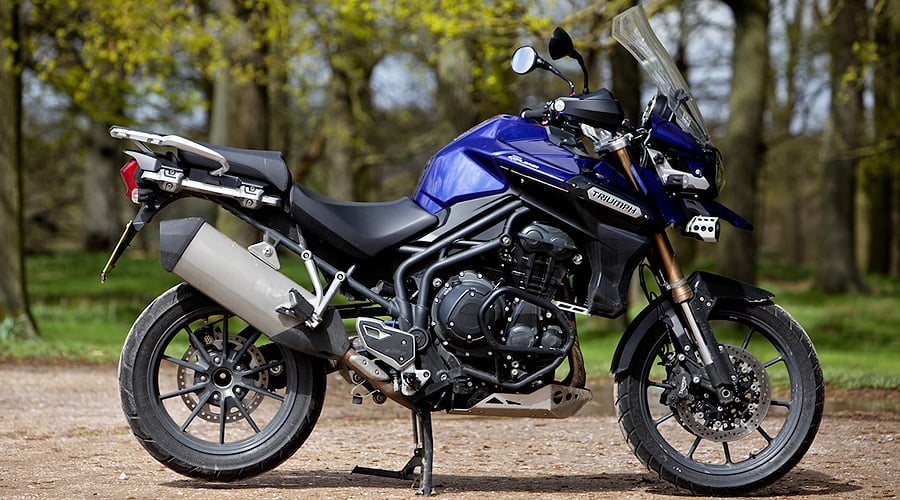
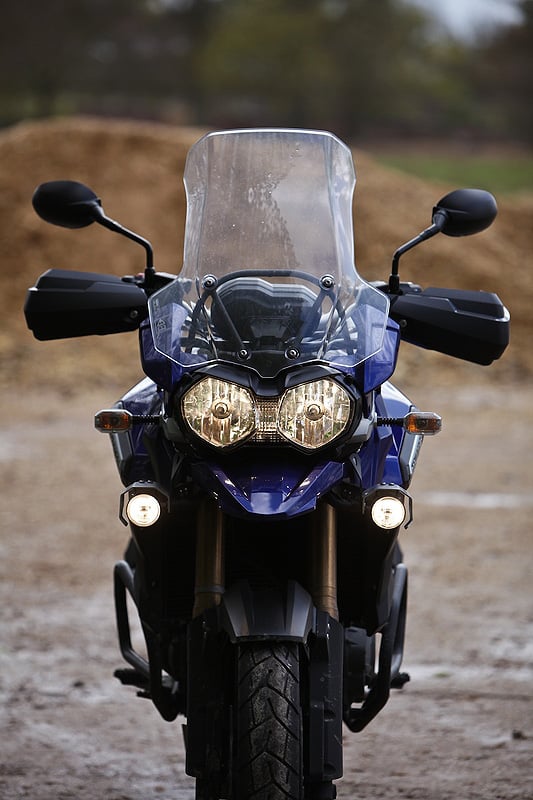
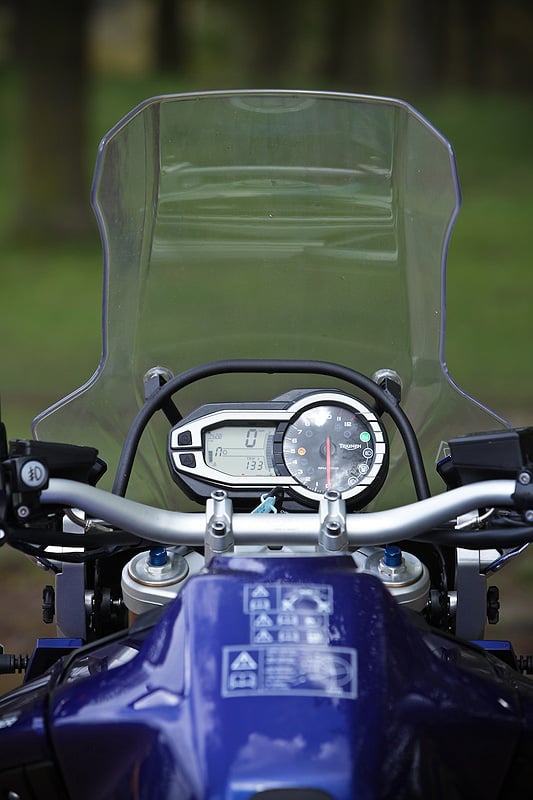
The £11,149 Explorer is Triumph’s response to these shifting market forces. It’s also a big boy’s adventure bike, although perhaps a little less off-road-orientated than the ubiquitous BMW GS, and it’s powered by a 1,215cc 12-valve triple that punches out a class-leading 135bhp. This all-new motor is wrapped in a new steel-tube frame suspended by adjustable 46mm forks and an enormous mono-arm-cum-shaft-drive unit.
There’s also cruise and traction control, switchable ABS, a height-adjustable screen and rider’s seat (840 or 860mm), a power socket and a comprehensive onboard computer with air temperature/ice warning, fuel consumption, fuel range, a gear indicator and average speed displays all as standard. There’s also a digital clock in the top left-hand corner of the LCD display, although for the 50-somethings who’ll form the majority of Explorer’s customer base, its readout is way too small and hard to see, especially in the wet. My test bike also flaunted a selection of options such as an ally belly pan, hand-guards, tyre pressure monitoring and front fog lights.
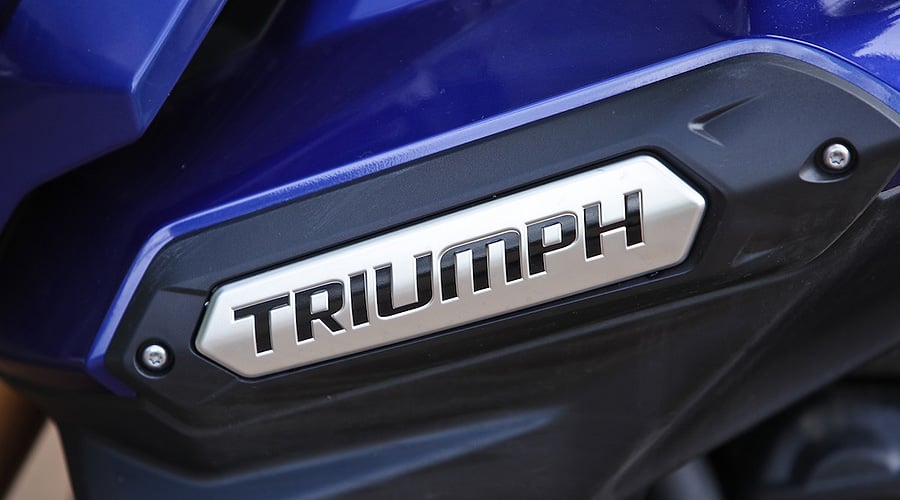
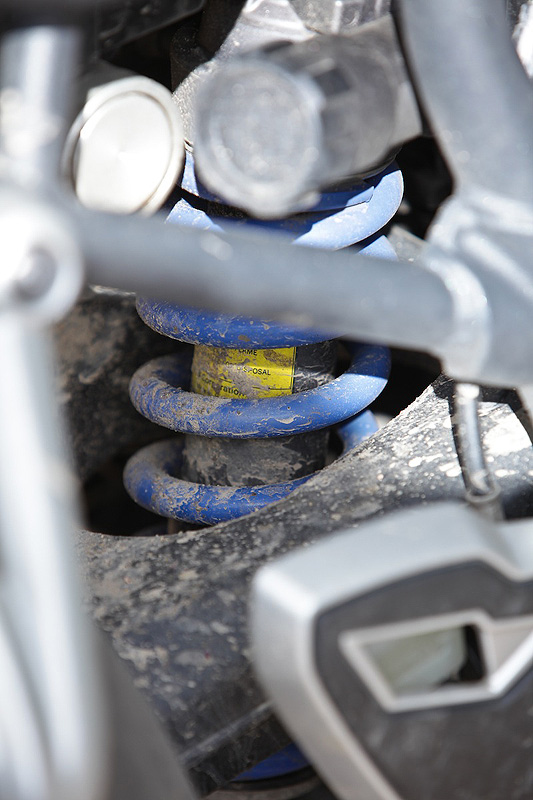
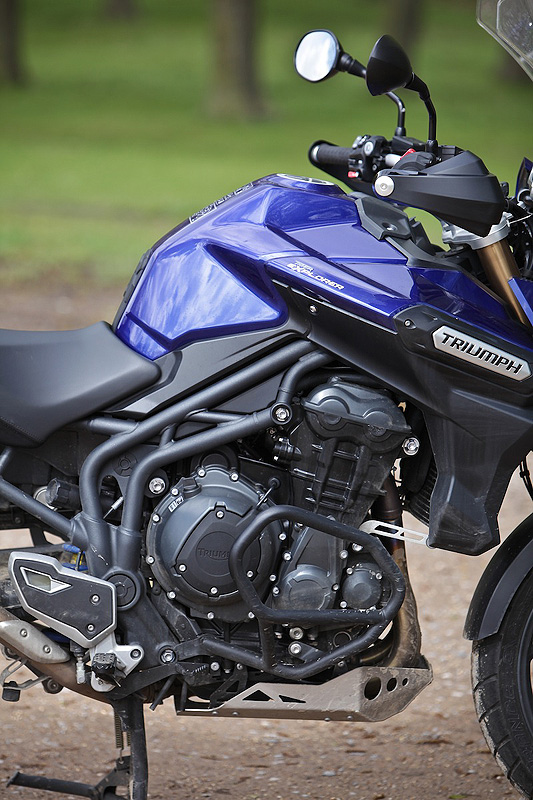
This test included a voluntary ride to Picardy and a guided tour of the Somme battlefields where the winds were higher, the rain heavier and the temperatures even lower than in the UK. But no matter, as apart from my extremities I remained dry and the Triumph proved to be perfectly cut-out for such a trip with ample weather protection (standard fitment screen on middle setting), a relaxed riding position, surefooted grip from the Metzeler Tourance tyres, secure handling and a comfy, compliant ride. Not forgetting masses of power and torque, along with a gloriously gruff exhaust note that only big triples can provide.
Despite the Explorer’s surfeit of urge and a light-action fly-by-wire throttle (not a Bowden cable in sight), the autoroute is fast but rarely much fun, so on the ride south I experimented with the cruise control which seemed unable to maintain a steady pre-set speed on the undulating road in blustery conditions – something which cruise-control-equipped cars have been able to do for at least 25 years.
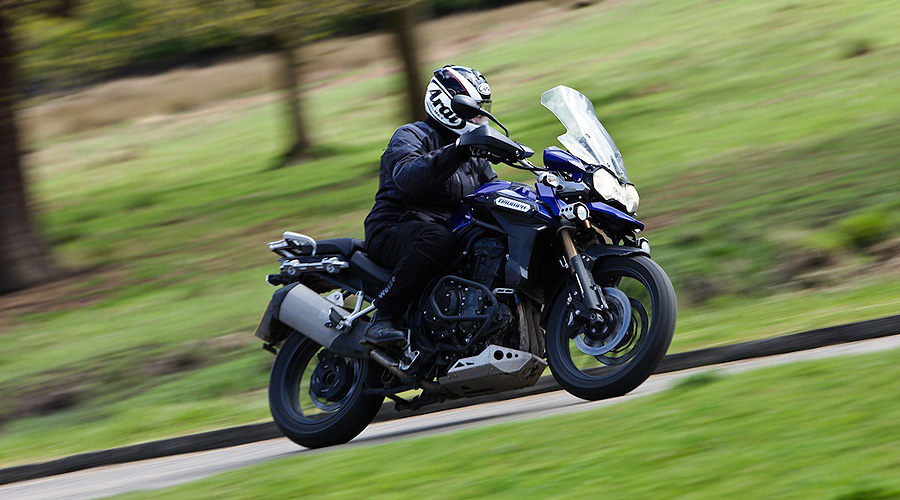
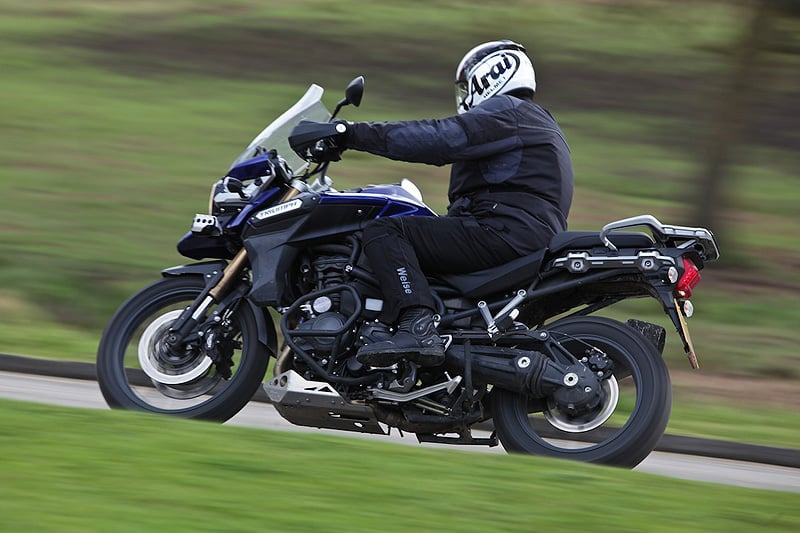
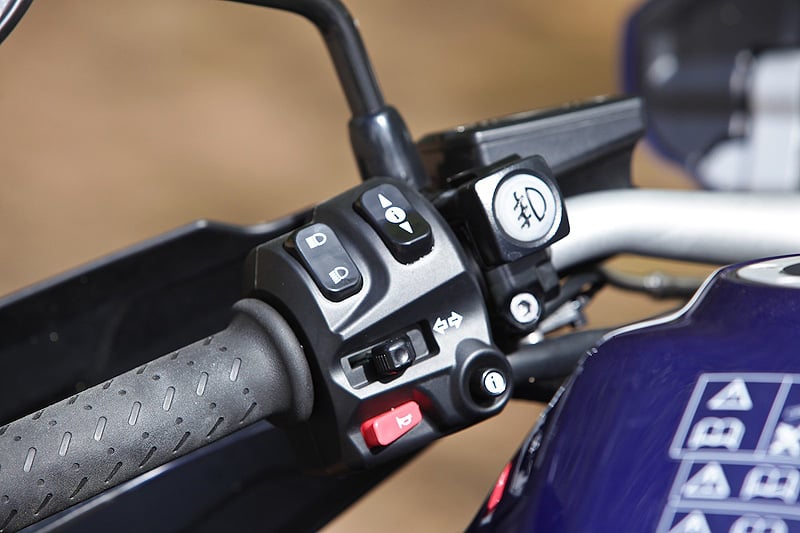
It’s on fast open roads like those in northern France that the long-legged Explorer really excels. It pulls very strongly, even from low speeds in a high gear, although the light-action throttle requires a delicate hand in the wet. This would probably be one reason why Triumph provided traction control, although having a delicate hand I was never aware of it actually doing anything. The shaft drive is also completely unobtrusive – there’s none of the bucking torque reaction that’s a feature of big BMW and Guzzi shafties. Under quite heavy braking, I occasionally felt the ABS pulsing briefly at the front, but that was usually provoked more by a jittery road surface than any lack of grip.
At 259kg wet, the big Tiger is no featherweight, but once on the move it doesn’t take any muscle to swiftly flip-flap through small roundabouts, and it holds its line and composure perfectly in faster corners. Additionally, the Tiger 1200’s front end doesn’t have the slight flex that’s occasionally apparent in the Tiger 800.
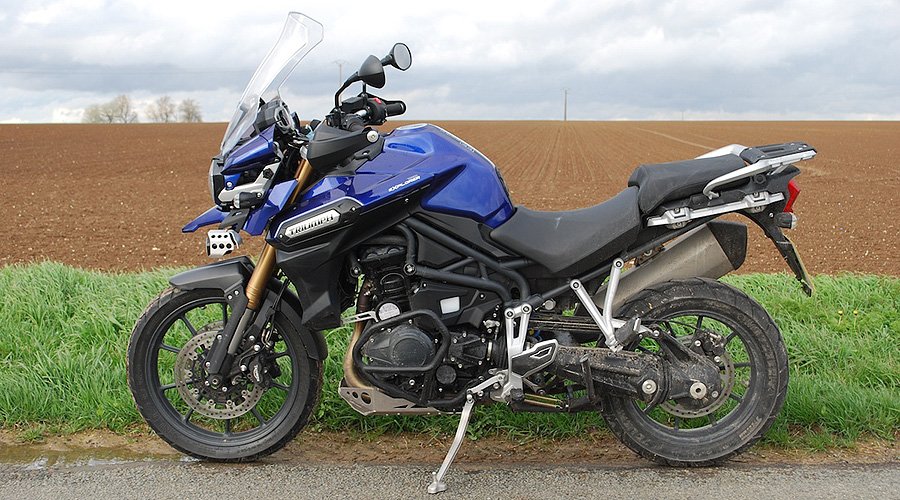
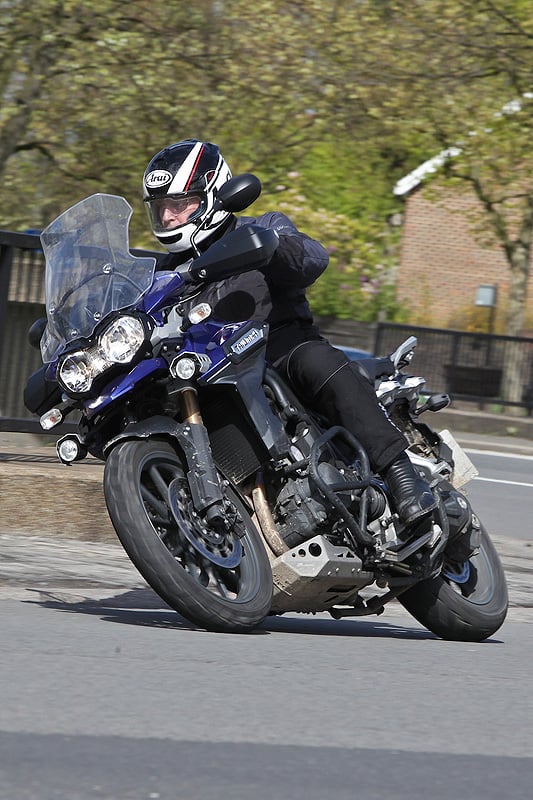
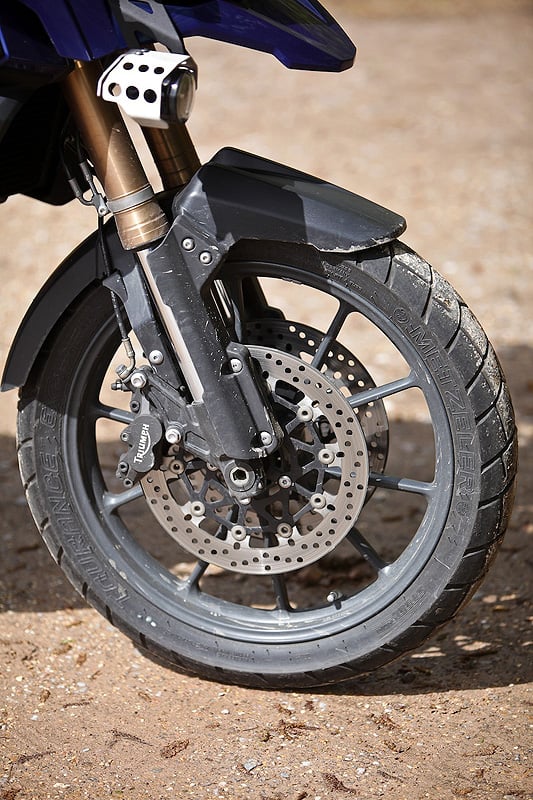
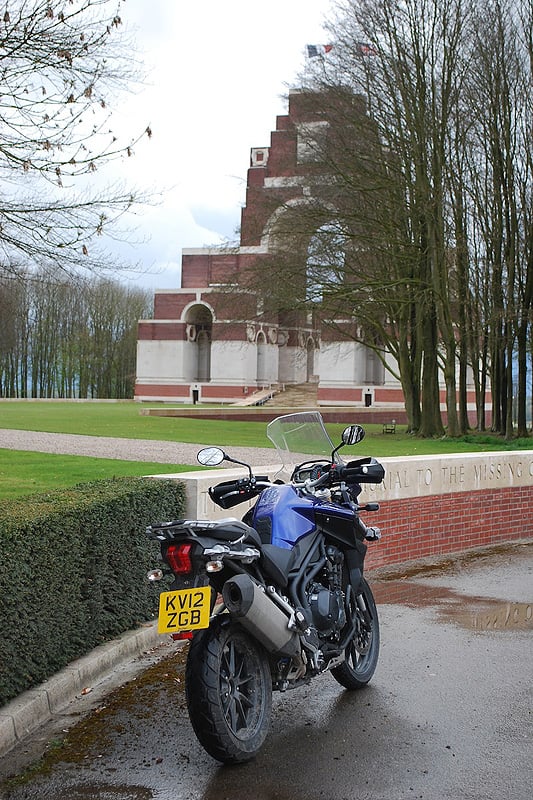
Despite what’s been reported elsewhere, I didn’t find the instrumentation’s menus or operation remotely intuitive, so adjusting the clock’s time, for example, or switching the traction control off before venturing up a slippery Somme farm track was out of the question, at least not without having the 144-page owners’ manual to hand.
There’s no faulting the big Tiger’s engine (or 6-speed transmission), though. It’s a peach, and it made light work of my French jaunt. As is customary, on my return ride I held the throttle wide open briefly on a stretch of deserted dual carriageway and saw an indicated 140mph-and-counting in no time, before prudence intervened.
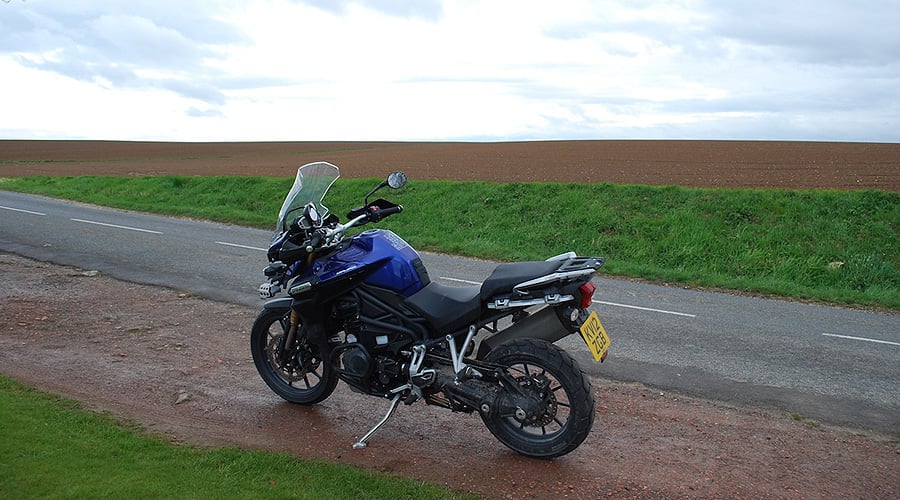
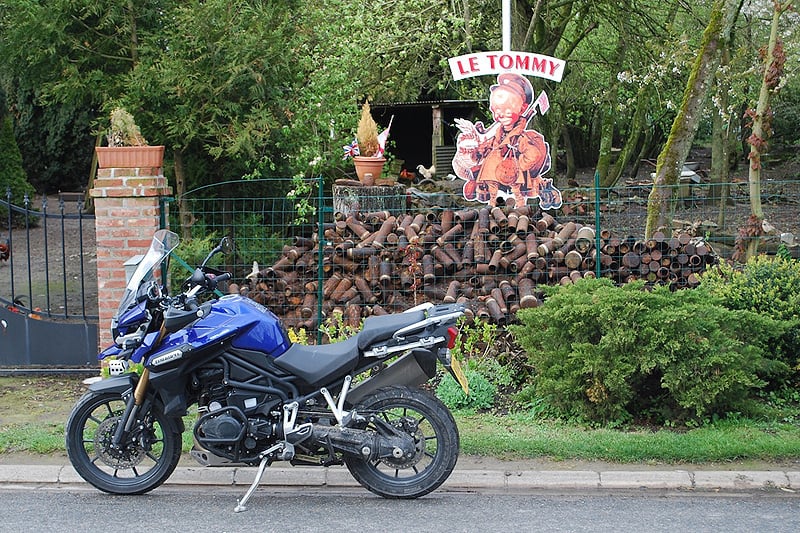
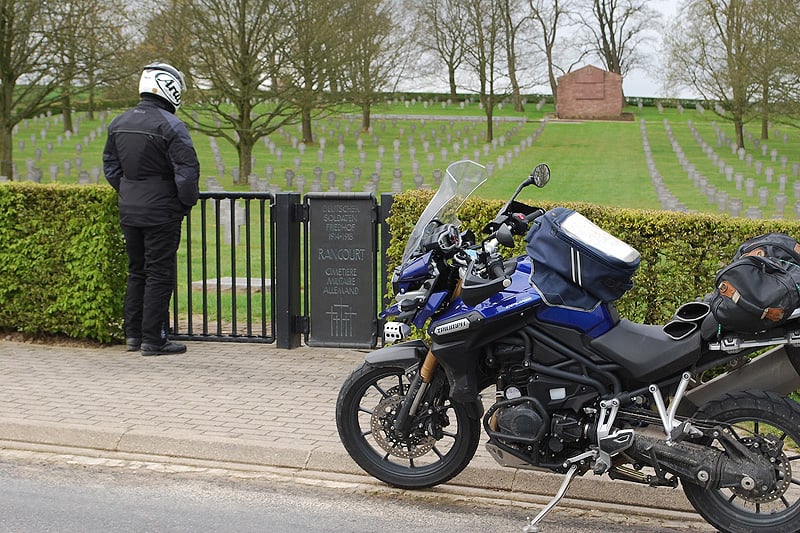
Of course, the big question is how does the new Tiger Explorer stack up against the top-selling R1200GS? Well, with its 20-litre tank it weighs 4kg more than even the GS Adventure with its 33-litre fuel capacity, and 24kg more than the 20-litre GS. And the R1200 GS Adventure I tested in late 2010 achieved an impressive 46mpg, which betters the 40.3mpg average the Explorer returned, although that’s still good for a safe 150 miles between fuel stops.
To counteract that, the Triumph has liquid cooling, an extra cylinder, an extra 45cc, an extra 25bhp, one extra lb ft (89 in total), a smoother and more refined engine, a beefier 18 Amp/hour battery (GS 14Ah), a 950W generator (GS 720W), conventional switchgear, lots more speed and, as mentioned, it sounds gorgeous. And by the time you’ve specced a GS12 up to standard Explorer spec with ABS, traction control and an on-board computer, the BMW will cost about £850 more than the Explorer.
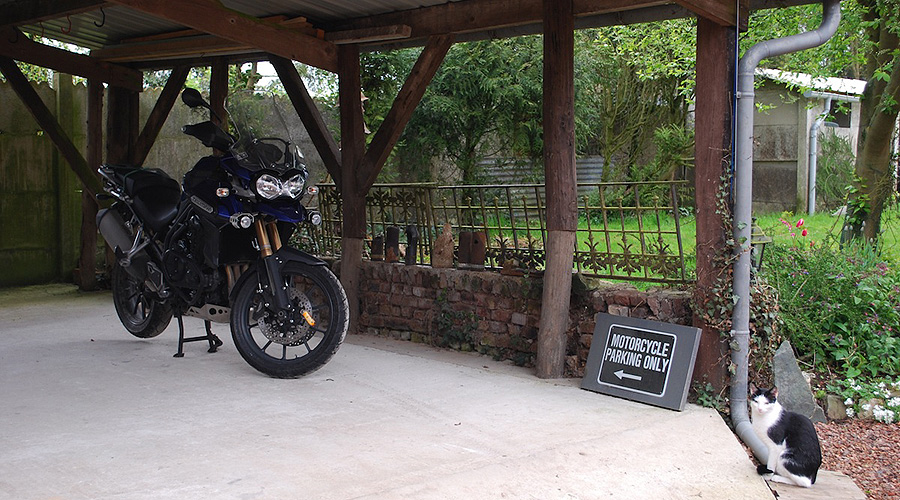
The many who worship at the altar of the German air-cooled flat-twin might not be tempted by the new Triumph, but those who’re done with sportsbikes and nakeds – and who are contemplating a lusty long-legged adventure-tourer certainly will be.
Price in UK: £11,149 OTR.
Photos: Jim Forrest



















